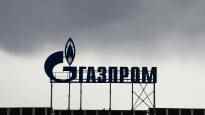Russia surprised with the maintenance works and is releasing gas to Europe again. The initiative is now completely in its own hands.
21.7.•Updated 21.7.
Russia leads and Europe loses. This is the situation regarding Russian natural gas.
Russia regulates deliveries as it pleases and is thus able to manipulate the market, raise prices and keep the EU on its toes.
On Thursday, Russia surprised again.
Europe was afraid that the ten-day maintenance break for the Nord Stream 1 pipeline from Russia to Germany would be extended, but Russia did start deliveries on time – albeit smaller than agreed.
The initiative is strictly in Russia, says the professor Veli-Pekka Tynkkynen from the University of Helsinki. He has written a recent book about Russia’s use of energy power.
– Russia has an advantage. It uses gas as a weapon of war and creates pressure by sometimes tightening and sometimes loosening the screw, he says.
– Now Russia is playing up the price by feeding some gas into the pipelines, and is thus able to strangle Europe.
The Nord Stream 1 pipeline does not pass through Finland, and Russia cut off gas supplies to Finland already in May.
Tynkkynen: Russia started manipulating the market last summer
The strangulation of Europe already started last summer, Tynkkynen says.
In the Nord Stream 1 pipeline, gas flowed normally, but in the pipelines running through Poland and Ukraine to Europe, gas was significantly reduced.
This had immediate consequences.
– Stocks could not be filled for the winter, the price rose and inflation started, Tynkkynen sums up.
– It is now understood that since last summer, Russia has been forcefully reducing Europe’s gas reserves.
According to Tynkkynen, European companies, including Fortum and Uniper, still tried to explain the matter with market logic. The reason was, among other things, the change from long-term contracts to the spot market with rapid price fluctuations.
It went unnoticed that Russia acted completely against market logic.
– If you have a product with a good price, you try to sell that product. Russia acted quite differently in the fall. It left gas unsold, even though the price was high, Tynkkynen says.
President Vladimir Putin it is easy to use power because the state controls the gas pipelines.
In the long term, Russia inevitably needs energy revenues, i.e. buyers for its gas. But it means that the trade will work, even if sales to Europe stop completely, Tynkkynen estimates.
– Putin calculates that he can sell gas to China and India.
The EU is frantically trying to get gas from elsewhere
The EU is not completely toothless. It is working hard to get replacement gas from elsewhere.
The United States has promised to fill the shortfall by selling more liquefied natural gas (LNG). EU countries are now aggressively building LNG terminals and leasing LNG ships as floating gas storage facilities in their ports.
There is enough gas in the world, estimates the energy industry’s gas market expert Heikki Lindfors. But the price is high, and there is a bidding and contract competition for the cargo of gas ships sailing the world’s seas.
– If the uncertainty of deliveries to Russia continues, the EU will have difficulties getting enough gas for the winter, says Lindfors.
The EU’s energy ministers have a difficult task ahead of them in Brussels next week. Based on the Commission’s proposal, they will decide whether gas should be regulated in the EU already next month.
This week, the Commission recommended 15 percent cuts in the gas consumption of the member countries.
